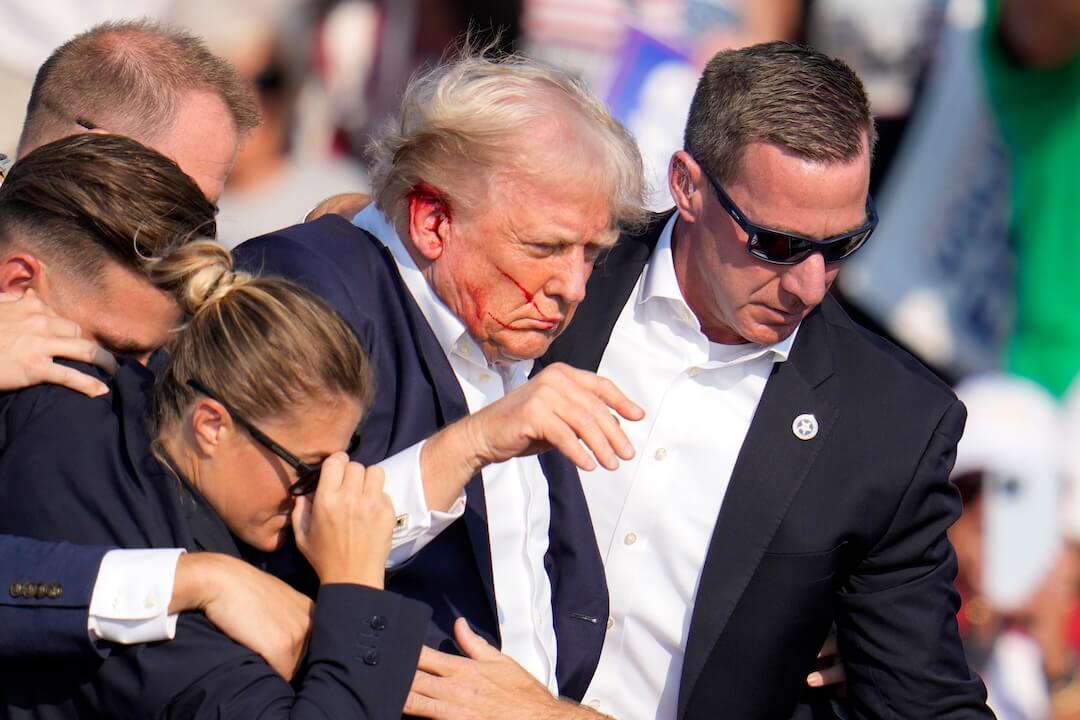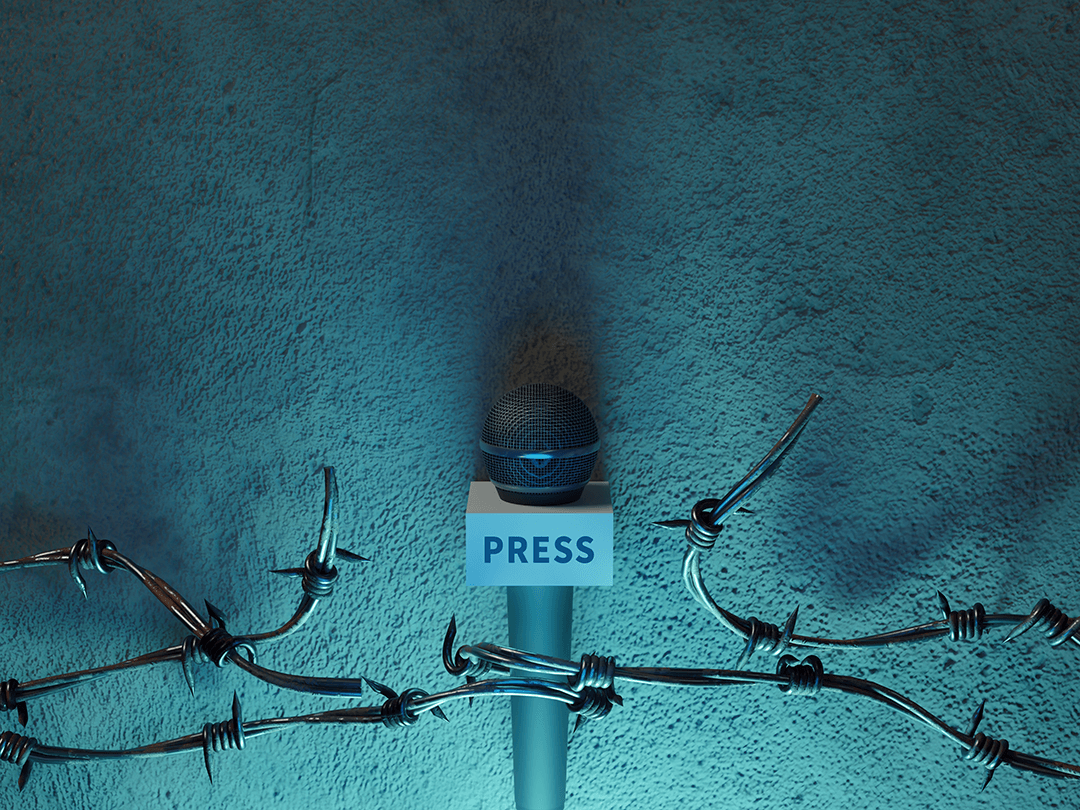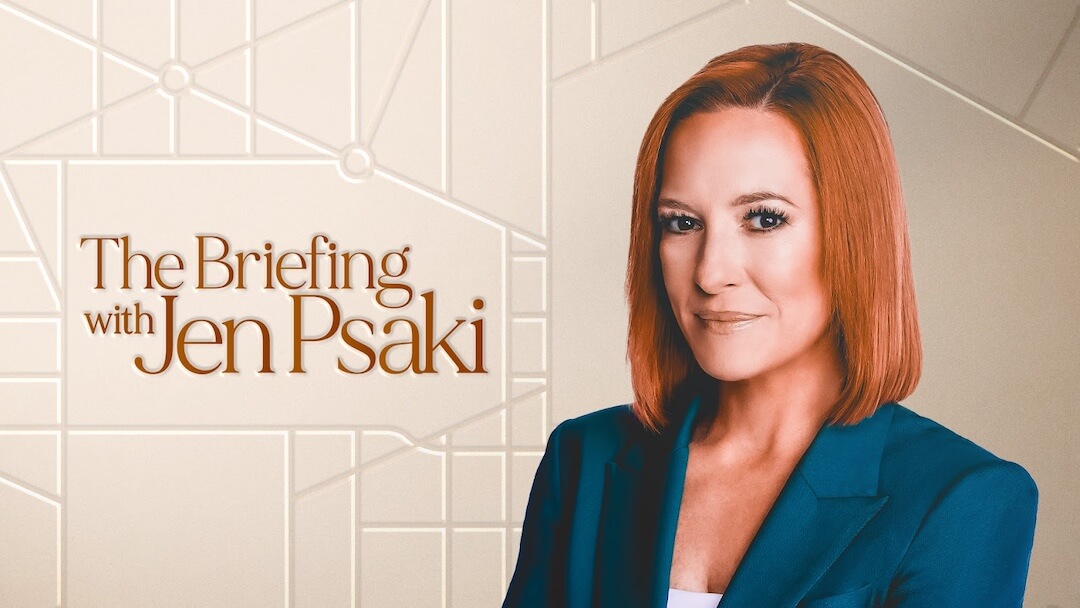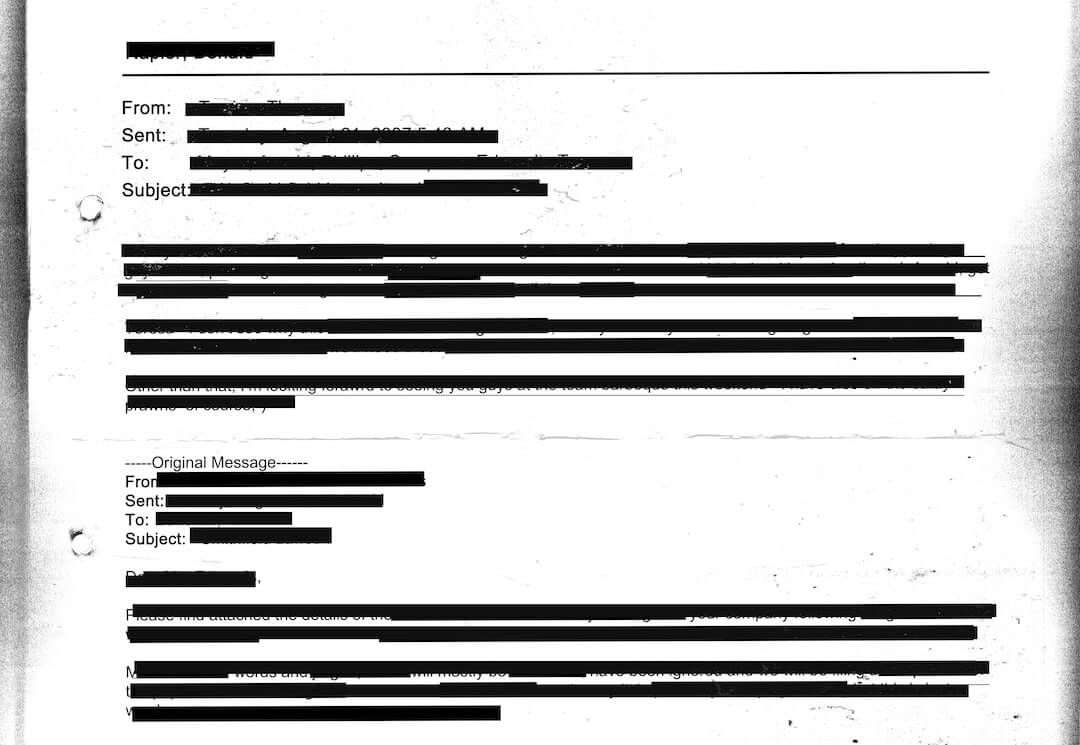Sean Holstege was on his day off when his wife shared the shocking news. There was a shooting at a campaign rally in Butler, Pennsylvania, involving former President Donald Trump.
Holstege, city editor for The Arizona Republic, flipped on the news and began reading. He then called Kathy Tulumello, the Republic news director who leads coverage of local news and politics. “I just reached out and said, ‘Alright, what do you need from me? I’m here. I’m available. What do you need?’” he said. “And then I just kept reading so I could be up to speed with what was happening.”
For many, the assassination attempt on Trump elicited grave recollections of the attempted assassination of President Ronald Reagan in 1981, and of the more recent shooting involving the U.S. Rep. Gabby Giffords. In 2011, the Tucson native had been meeting with constituents at a supermarket parking lot when a man drew a gun and shot her in the head before he proceeded to aim at others. Giffords survived with a life-altering brain injury. Six people died.
Reporters who covered the Tucson shooting remember a huge swarm of local, national and even some international outlets descending on the story, which was rife with misinformation from the beginning when some news organizations initially reported Giffords had been killed. In the days following the Trump shooting, there have been an onslaught of rumors that hundreds of journalists have been working to sort through and confirm.
The Arizona Republic (which is owned by Gannett) has initiatives to repackage news to get more people into a story from different angles, Holstege said. Early on after the Trump shooting, the newspaper had received comments from Giffords and her husband, U.S. Sen. Mark Kelly. Holstege went to work on an article that was published that night, titled “Donald Trump shooting brings words of support from Gabby Giffords, Mark Kelly.” The story led with Giffords and Kelly being among the first to condemn political violence after the news broke. “It was only natural for Giffords and Kelly to comment,” Holstege wrote. “Their lives were ripped apart by a shooting at a political event 13 years earlier in Arizona.”
Holstege told Poynter that to him, and to many others, the couple’s comments carry more weight than a typical political reaction because of their experiences. He added that when he first heard of the Trump shooting, “it did evoke Gabby Giffords,” but the editor emphasized that it wasn’t first in mind.
On Jan. 8, 2011, Holstege — then a senior reporter for The Arizona Republic and an adjunct professor at the ASU Cronkite School of Journalism — was at an orientation for new professors.
“So there’s a conference table full of 20, 30 professional journalists,” he said. “And all of a sudden, everybody’s phones start making noises and buzzing and vibrating and pinging, and we’re all looking around at each other.”
Holstege vividly remembers everyone standing up and telling the dean of the school that they had to leave. He rushed to the newsroom to pitch in how he could. By then, there were already field reporters headed to the scene, including many journalists who lived and worked in Tucson.
“Your first instinct is, ‘What happened? Let’s do this diligently. Let’s make sure we get accurate information out. Let’s not jump to any conclusions.’” On the day of the shooting, and in the days that followed, Holstege said his job was to sort out the identity of Jared Lee Loughner, Giffords’ shooter. He filed public records requests and did a lot of background searches using LexisNexis and other tools to try to find whatever information he could, feeding it to his colleagues.
Tom Zoellner, an author, professor and a friend of Giffords, remembers an onslaught of well-wishers and international media descending on Tucson. The Phoenix native had left journalism in 2003, which he said freed him up “to do the things that reporters are forbidden to do” like give money to political causes or display campaign signs. In Zoellner’s case, he worked for Giffords as a field organizer in Cochise County when she was running for a congressional seat in 2006. “I thought that if more people like Gabrielle were in Washington, that would not be having such convulsions as a nation,” Zoellner said. He later wrote speeches for Giffords.
When he heard of the shooting, Zoellner said he immediately got on a plane to Tucson from his home in New York City. When he arrived, Zoellner said he tried to help out Giffords’ staff in any way that he could.
“And it became apparent, pretty quickly, how does such an obscene thing happen in a civilized society?” Zoellner said. “What were the sociological factors that did not cause this event, but made it possible for some sort of Black Swan that goes swimming through all the filters. A clearly deeply schizophrenic, troubled individual is allowed to buy a firearm, buy ammunition, go through life at a community college without anyone ever sounding an alarm bell loud enough that he would have gotten the help that he so desperately needed.”
Zoellner lost a friend in the shooting — Gabe Zimmerman, who was Giffords’ community outreach director. “Gabe and I worked together on her 2006 campaign, and he was just such a tremendous guy,” he said. “I say this without qualification: He was the best guy I ever met in politics. This is an area of American professional life that’s really not known for virtue, or courage, or people going into it with the right public service motives.”
Most of the early coverage of the Giffords shooting was what Zoellner described as “a sentimental variety.” He said there was a lot of focus on the heroism of the bystanders at the Safeway supermarket where the shooting took place, and a lot of focus on her recovery. Zoellner described there being a human interest emphasis.
In the frenzy immediately after the Tucson shooting, Zoellner said he just wanted to be back in Arizona. He didn’t realize he would later write about it. Later that year Zoellner would go on to publish “A Safeway in Arizona.” It was a nonfiction book by an author who was friends with his subject.
In a later book titled “Rim to River: Looking Into the Heart of Arizona,” Zoellner included an essay about his friendship with Giffords and with Zimmerman, and his reflections on coverage of the shooting. He expressed his distaste for the shooting being described as a “tragedy.” Zoellner said that was a “syrupy newscaster word” that enraged him. He told Poynter it kept coming up in both print and broadcast coverage of the shooting. “I found this word somewhat nauseating, because a ‘tragedy’ implies some sort of unavoidable natural set of phenomena, like an earthquake or a hurricane,” he said. “This was an entirely avoidable tragedy, and my problem with the coverage was that too much of it had sort of an inspirational narrative to it. And not nearly enough of, how did this happen?”
Denise Grady also remembers a huge media presence following the Giffords shooting. She was part of a big team sent to Arizona by The New York Times to report on the story. Grady — a reporter in the science news department since September 1998 — was assigned to get the medical picture of Giffords and of others who were injured, as well as details on the medical teams handling the victims. “I do remember hoping to get more details on Giffords’ treatment and how she was doing, but at that point, her husband was very, very protective. And I know, at some point, some doctor had agreed to give me an interview, and her team canceled it,” Grady recalled. “I showed up and it was just not going to happen.”
She found it difficult to obtain information on Giffords’ condition early on. But Grady said she was lucky enough to be granted an early interview with a firefighter/EMT who was first on the scene. Grady said that, after the Times story was published, a press conference was held with the same firefighter for everyone else. “So I went to that just to see what else there was to say that I hadn’t had,” she said. “And, I mean, there was just an army of people there from papers all over the place. There was TV, everybody.”
Grady, who retired in 2021, said she’s been reading a lot of Poynter this week and appreciated learning about the journalists “doing the right thing early on and being really cautious about saying what had happened.” “Because right off the bat, people heard the sounds, they saw Trump fall, and nobody knew immediately what had happened,” she said. “And I know they got some flack for that, but it seemed that they were doing the right thing. You don’t report anything unless you know what you’re talking about.”
Dylan Smith, founder and co-publisher of the Tucson Sentinel, looked back and found he had reported 75 separate stories on the Giffords shooting between the morning of Jan. 8 and Jan. 19, 2011. At the time, he was the only full-time staffer at the nonprofit independent newsroom that provides watchdog reporting, local commentary and expert analysis for Southern Arizonans. Smith scrambled to find a few people to pitch in for coverage of the shooting, including his wife, who he described as an amazing editor.
Smith said he intended to be at the Safeway that morning to cover Giffords’ event for constituents. His wife had gifted him a new pocket video camera for Christmas — a Kodak Zi8. He had planned on testing the camera and asking Giffords a few questions about how she thought the legislative session was going to get rolling. When he didn’t end up getting out of the house, he figured he would catch her later.
“But of course, that discussion didn’t happen.”
Smith said there was a lot of “terrible reporting” early on after the Giffords shooting. He spent a lot of time trying to debunk claims for the Tucson Sentinel. “There were absurd rumors going around and getting traction on social media, and being picked up by not exactly the greatest of publications online.”
One claim Smith heard was that the alleged shooter had been a member of Giffords’ synagogue. He said he had to reach out to the rabbi and confirm that he wasn’t. Another claim that circulated was that Loughner’s family had barricaded themselves in. It wasn’t true. “They put a piece of plywood in front of the little walkway leading up to their front door, so people would stop walking up and knocking on their front door,” Smith said. “Not exactly a barricade.”
An observation Smith has of the ongoing Trump shooting coverage is that a lot of granular details, some of which may turn out to be quite important, are being reported by local news outlets and not by national news outlets.
“It’s local reporters who know people, who have sources, who are figuring things out,” he said. “I don’t think we’ve seen errors of the scale that were made when Gabby was shot. But there’s a lot of basically assuming facts not in evidence. Was it actually an assassination attempt? You know, apparently, but definitively saying so? Did this guy mean to kill Donald Trump? They don’t know.”
Smith said the photojournalism has been astounding. “Those folks who were right up against the platform did some amazing work in what must have been just a very shocking situation,” he added. “Sometimes, in those instances, you just kind of go into autopilot mode, and don’t think about it until later.”
On whether any comparisons could be drawn between coverage of the Giffords shooting and coverage of the Trump shooting, Zoellner was clear to make this distinction: “Trump is just such a polarizing figure in a way that Gabrielle wasn’t. So any one-to-one comparison of these shootings is going to fall down immediately on those lines,” he said. “I will say, though, that for his supporters, the pumped fist, the American flag, the ‘fight, fight, fight’ — that certainly solidified the inspirational nature of what happened.”
Zoellner said there was an immediate wave of sympathy and respect for Giffords in the wake of the shooting, even from Republicans who didn’t like her. “Trump is experiencing a kind of deification, or for some, a confirmation of his — that the divine hand is on him.”






